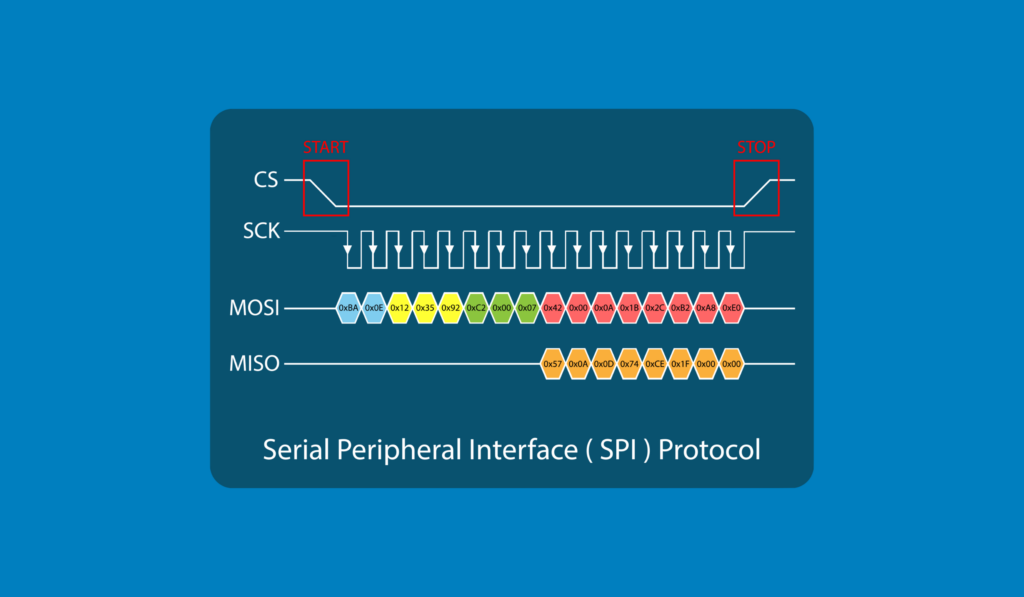Table of Content
- Introduction to the SPI Protocol
- Data Pin Configuration in the SPI Protocol
- Versatility and Challenges of the SPI Protocol
- Use Cases and Adoption of the SPI Protocol
- Expert Implementation of the SPI Protocol
- Conclusion
Introduction to the SPI Protocol
SPI (Serial Peripheral Interface) is a widely used synchronous communication bus standard in various applications such as sensors, camera lens control, communications, and data storage on SD cards. Its simple implementation and fast rate data transfer capability make it a popular choice. The SPI protocol utilizes a master/slave configuration for communication, where a single master device can initiate and control communication with one or more slave devices. The device can communicate with one or more slave devices.
Data Pin Configuration in the SPI Protocol
The SPI protocol utilizes four data pins on the master controller, including SCLK, MOSI, MISO, and SS. SCLK is the clock signal that determines when data bits are transmitted, while MOSI sends data from the master to a peripheral device, and MISO receives data from the peripheral device to the master. SS selects the active peripheral device on the bus, enabling multiple peripherals without the need for a formal addressing scheme.
Versatility and Challenges of the SPI Protocol
SPI protocol is a versatile communication bus standard that offers fast rate data transfer and customization options for various applications. It is suitable for short-distance applications and has low power requirements, commonly using for High Level Input Voltage (VIH) 2V or 5.5V levels.
However, the flexibility of SPI can also pose a challenge, as it requires careful specification of components to ensure compatibility and seamless integration. Therefore, users must thoroughly understand and consider their application requirements before customizing SPI, as it may lead to incompatibilities if not carefully planned and implemented.
Use Cases and Adoption of the SPI Protocol
In summary, SPI protocol is a widely adopted communication standard that offers a full duplex communication channel, and the design supports fast data rates. Its versatility allows various applications, from sensor systems and camera lens control to communications and data storage solutions like SD cards.
Expert Implementation of the SPI Protocol
Designing a connectivity protocol that goes between an MCU and a Wi-Fi or BLE chip can be a complex process requiring SPI protocol expertise. However, implementing the SPI protocol requires skilled engineering and hardware expertise. Therefore, partnering with an IoT development company with expertise in SPI protocol is crucial to ensure the successful implementation of this technology.
Conclusion
The SPI protocol remains a highly reliable and fast communication standard, suitable for short-range communication between master and slave devices. While its simplicity makes it attractive, careful planning is required to ensure compatibility among connected components. Partnering with experts in SPI technology can mitigate risks and enhance the success of a project. With its widespread adoption in applications like sensors, camera control, and data storage, SPI continues to be a go-to protocol in embedded systems and IoT projects.












